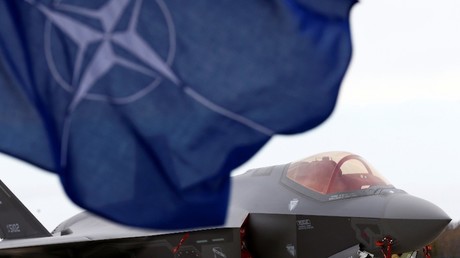Sweden to hold ‘biggest military exercise in decades’ with NATO amid fears over Russia
The exercise, Aurora 17, which is scheduled for September, is designed to strengthen Sweden’s defense capabilities and create a “credible and visible” deterrent that would force any potential enemies “to carefully consider the risks of attacking our country,” the Swedish Armed Forces said in statement.

Some 19,000 soldiers from all military branches are expected to participate in the exercise, which will be conducted in the air, on land and at sea. The major training areas will be in the southeastern Stockholm-Maelaren region and the Gothenburg area, as well as on and around the island of Gotland, not far from the Russian exclave of Kaliningrad.
The statement also called the drill “the first and largest exercise of its kind in more than 20 years.”
“Several other countries,” mostly NATO members, were invited to participate in the exercises to enhance “Sweden’s defense capability against a larger, sophisticated opponent,” the statement added in apparent reference to Russia.
Military units from NATO members such as Denmark, Estonia, France, Lithuania, Norway and the US, as well as from nonaligned Finland, will take part in the drills, according to the Armed Forces of Sweden, which is also not a member of the bloc.
‘Russia has changed the security environment’ – commander of US forces in Europe
In the meantime, Lieutenant General Ben Hodges, the commander of the US Army forces in Europe, openly said that Sweden’s increased military activity is a reaction to what Western countries often describe as Russia’s growing “assertiveness.”
“Russia has changed the security environment,” Hodges told the Swedish Dagens Nyheter newspaper on Sunday, adding that “we have to react to that, and not just the US, but the whole of NATO.”
“The fact that Sweden decided that they have to put troops back on Gotland is a very clear indication of what’s going on. Sweden is known as moderate, credible and alliance free. Nevertheless, Sweden felt that this was necessary,” he added.
Sweden removed a permanent military base from the island of Gotland after the Soviet Union’s collapse. However, it re-established a permanent military presence on the island in 2016, citing “external factors” and the “strategic importance” of the island.
On Sunday, Hodges also drew attention to the strategic relevance of Gotland, saying that he does not think “there is any island anywhere that is more important.” He also said that he “looks forward to [his] soldiers being given the opportunity to train as much as they can with you [the Swedish Armed Forces].”
On July 20, Stars and Stripes reported that the US plans to deploy a Patriot missile battery, helicopters and a National Guard tank company to Sweden in September to join the Aurora 17 drills.
In June, the Swedish military also announced its intention to replace all of its aging air defense systems and potentially buy US-made Patriot missiles, citing an alleged threat from Russian Iskander-M missile systems stationed in Kaliningrad.
Russia repeatedly expressed its concern over Sweden’s increased military activities and its closer cooperation with NATO. In early June, Russian President Vladimir Putin warned that Moscow would have to take additional security measures if the Scandinavian country decided to join the alliance.
“If Sweden joins NATO, that will affect our [bilateral] relations in a negative way,” Putin said at the St. Petersburg International Economic Forum, adding that Russia would have to react to the decision as if it were “an additional threat.”
At the same time, he stressed that Russia poses no threat to Sweden and does not plan to do so in the future.
Source:rt.com

